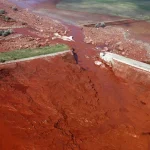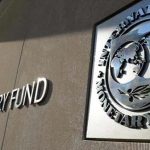Moody’s comments on impact of Government’s coronavirus measures on Democratic Republic of Congo’s banks
On 24 March, the Democratic Republic of Congo’s (DRC, Caa1 stable) central bank cut its benchmark interest rate and announced measures to reduce the adverse effects of the coronavirus outbreak on the economy. The measures include suspending banks’ risk classification of loans and guidance for restructuring the loans of affected customers, which will keep some borrowers’ liquidity issues from becoming solvency issues. The central bank also created a special refinancing window, reduced banks’ regulatory reserve requirement ratio, and postponed the introduction of stricter capital requirements.
We expect the measures to limit banks’ asset quality deterioration in the current difficult environment, but should they remain in place for more than a few months, they would delay strengthening banks’ credit profiles, lower transparency about problem loans in the banking system and reduce forecasting visibility. We do not expect banks to aggressively lower their
underwriting criteria.
We expect borrowers in wholesale and retail trade, transportation and mining sectors to be most badly affected by the coronavirus outbreak, and small and midsize enterprises (SMEs) to be particularly vulnerable to economic shocks. As of year-end 2018, we estimate the wholesale trade sector accounted for 8.7% of systemwide lending, the retail trade sector
4.4%, the transport and warehousing sectors 4.9% and the mining sector 8.1%. Systemwide, problem loans were high at 16.8% of gross loans as of December 2018.
The central bank’s measures support DRC banks’ liquidity by providing access to cheap funding so that they can meet cash calls from affected borrowers. The central bank cut its benchmark interest rate by 150 basis points to 7.50%, set up a special refinancing window for operations with tenors between three and 24 months at a relatively cheap cost and lowered
the reserve requirement ratio to 0% from 2% on Congolese franc demand deposits.
Although providing local currency liquidity is a slight credit positive for banks, the economy’s high dollarisation, in which around 90% of deposits are denominated in US dollars, limits the central bank’s capacity to support banks’ liquidity in case of need. The extensive dollarisation reflects the population’s fragile confidence in the Congolese franc after hyperinflation in the 1990s and inflation of 53% in 2009 and 55% in 2017, as well as the central role of commodities in the DRC economy. Mining and oil exports account for more than 85% of merchandise exports and tend to be invoiced in US dollars.
Nonetheless, DRC banks’ have a sizeable liquidity buffer, with cash and interbank balances (primarily in US dollars) comprising around 50% of assets as of December 2018. The ample liquid resources reflect the DRC’s scarcity of creditworthy borrowers and banks’ preference to keep a large proportion of their assets liquid given depositors’ limited confidence in the local currency.
Separately, the central bank’s postponement of stricter capital requirements will also mitigate asset quality deterioration by giving banks greater flexibility to support borrowers facing temporary liquidity issues. However, an extended delay would delay the strengthening of banks’ credit profiles. As of year-end 2019, DRC banks must have a minimum 7.5% Tier 1 capital ratio, as well as have a minimum absolute capital base of $30 million. Systemwide, we estimate the Tier 1 capital ratio at 11.9% as of December 2018.
We do not expect the central bank’s measures to have a material impact on the banks’ profitability. We estimate that DRC banks had a 1.1% return on assets ratio during 2018















